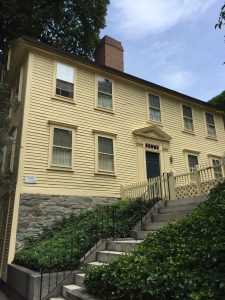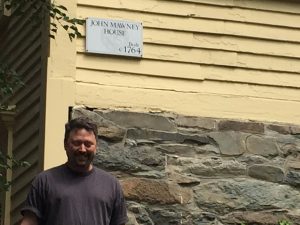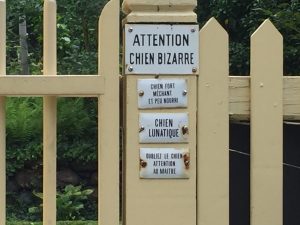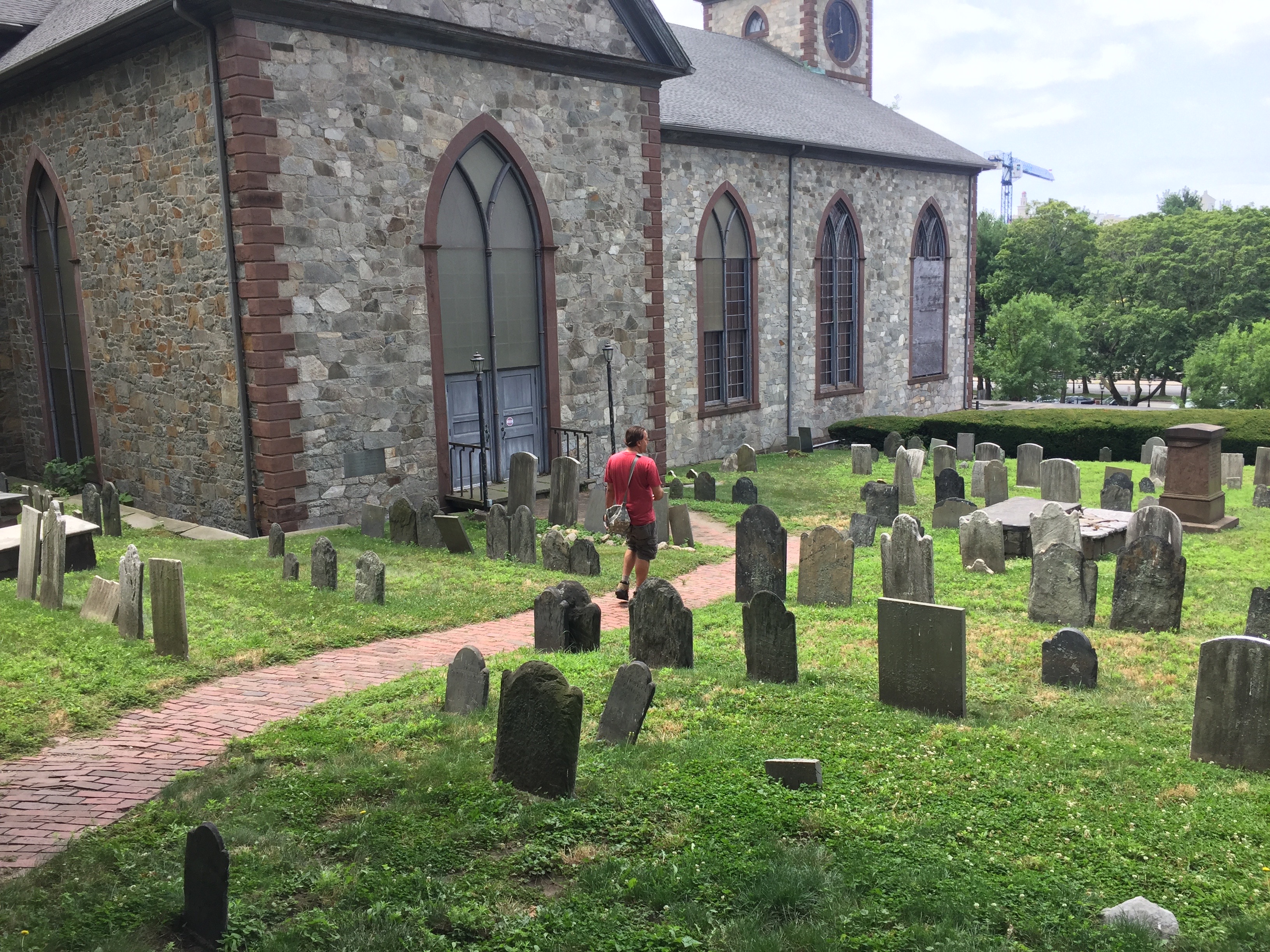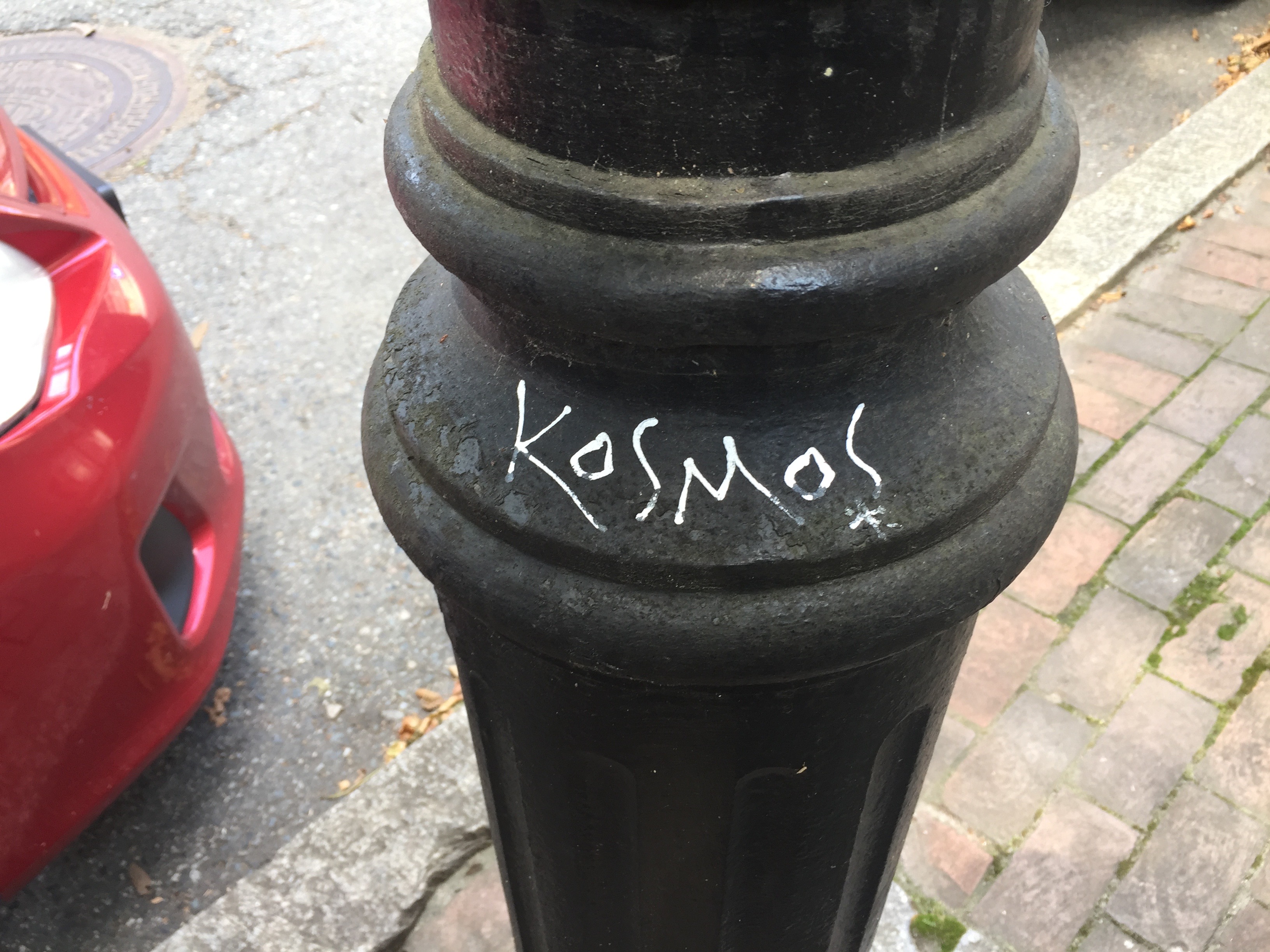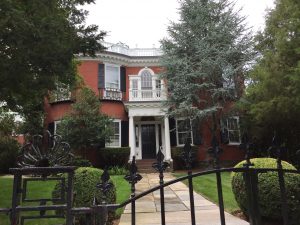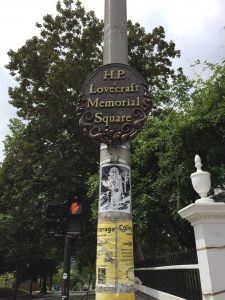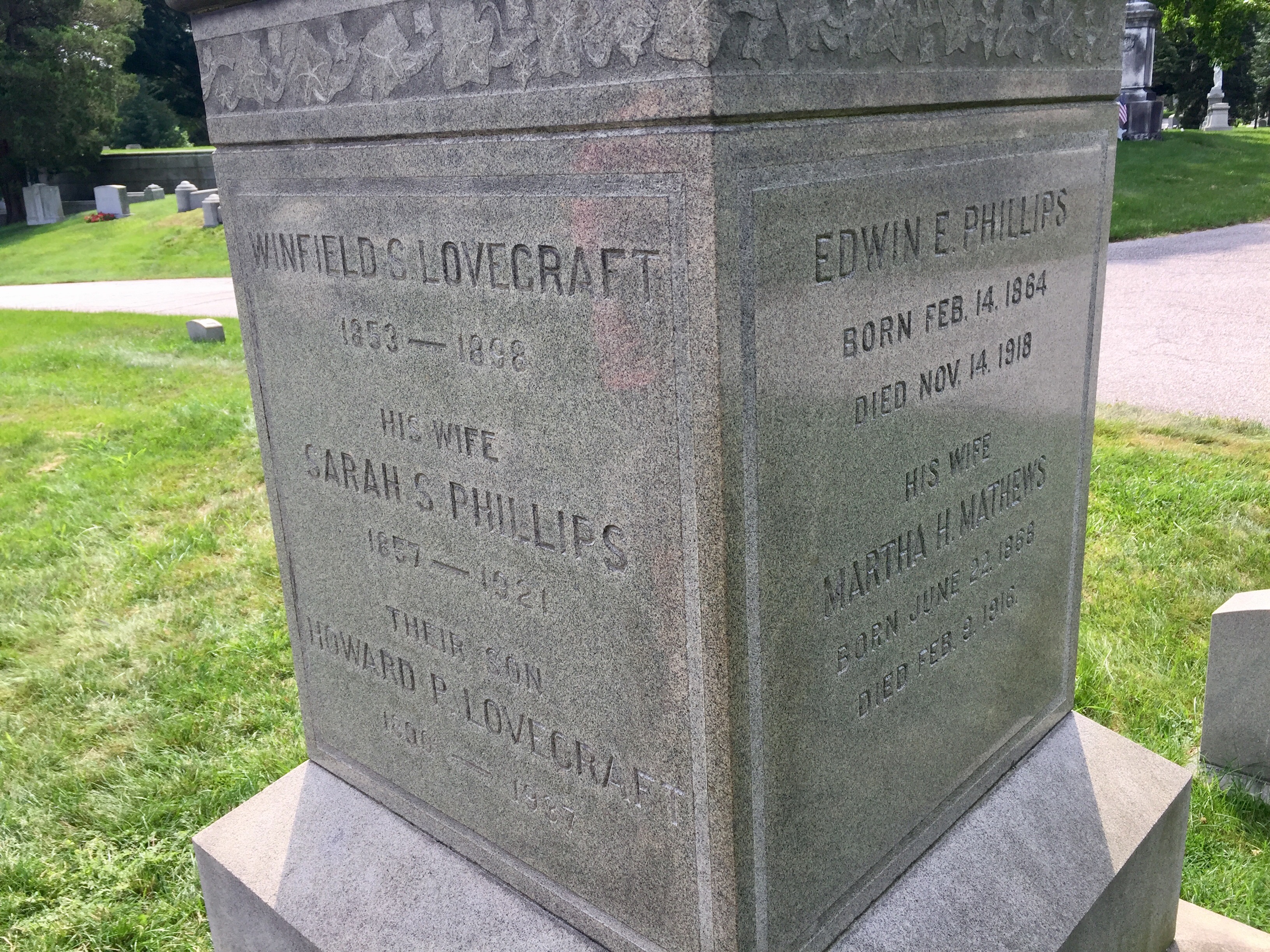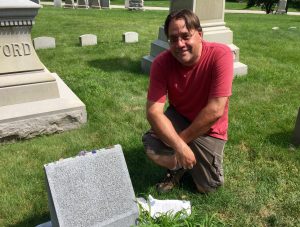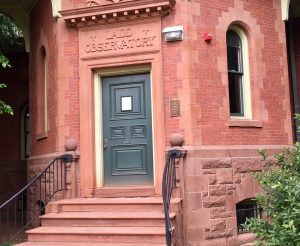Real Life Adventures: Lovecraft’s Providence
by Michael Curtis and Brendan LaSalle
Halloween is the perfect time to celebrate one Howard Phillips Lovecraft. To that end, we re-present this Real Life Adventure that took two of our own to his birthplace.
Goodman Games uses a number of methods to inspire the creativity behind our adventures. What we call “real life adventures” is one such method. This is where we travel to inspirational places or undertake adventurous activities that give us material to write about. In the 2017 Goodman Games Gen Con Program Guide, you can read about several such real-life adventures. On July 23, 2017, Michael Curtis and Brendan LaSalle took a trip to Providence, RI – the birthplace of horror writer H. P. Lovecraft, author of “The Call of Cthulhu” and many other well-known tales. What follows is the only surviving record of their expedition. To clarify the document’s different narrators, Michael’s account is vertical and Brendan’s is italicized.
On a pleasant summer’s day, I found myself in historic Providence, home to Howard Phillips Lovecraft. The purpose of my journey was to explore Lovecraft’s old stomping grounds and experience the city as he did. Joining me for this excursion was Brendan LaSalle, author of many Goodman products, including the DCC Horror module, The Web of All Torment; Tim Deschene, a Rhode Island native who literally has Lovecraft in his blood; and Brian Courtemanche, a writer for several of Chaosium’s Call of Cthulhu books. One could not ask for a better group to investigate Providence’s secrets.
Our trip to providence was strange.
I kept making jokes about the trip in the days preceding – a famous writer, an ex-military local, the head librarian of a private New England school, and myself heading to Providence to investigate the haunts of the mysterious horror writer the week before a solar eclipse plunges the world into darkness? It was like a Call of Cthuhlu adventure. And with a line-up of investigators like ours I was sure to be the first to die, probably offstage.
The jokes were there to cover up a real nervousness I felt. I am not a superstitious man, but I have spent much of my life dreaming up horrors. I don’t believe in the supernatural, but I think about it all the time, and I believe that if it the supernatural is at all real the best chance is that it’s like Lovecraft envisioned – strange and unknowable horrors with alien logic incomprehensible to man. Forget friendly ghosts, quirky witches, and sexy vampires looking for prom dates – if the supernatural is real, it will be precisely the opposite of how we hope it will be.
We decided to all read a Lovecraft story before we met. Michael suggested “The Shunned House,” the perfect choice since we were meeting at the house Lovecraft modeled his story on.
Reading “The Shunned House” for the first time in probably 20 years, I was struck by its quality. The story invokes horror convention and then completely puts it aside for a wonderfully different take on the Vampire trope, creating a strange, tragic, and horrifying story that ends on a tiny, sweet note of hopefulness that contradicts our expectations of Lovecraft. A masterwork.
We began at 135 Benefit St., the location of Lovecraft’s “The Shunned House.” This building dates to 1769 and is one of the many colonial-era buildings still standing in Providence.
Lovecraft set his tale of ghostly vampirism in this house, as he was familiar with the home from visits to it when an aunt worked there. The house’s bright yellow paint job does little to dismiss the feeling of age hanging about the home—along with the rest of Benefit Street. Having neglected to bring out Crooke’s tubes, flamethrowers, and carboys of carbolic acid, we chose not to peek too closely into the cellar through the street-level windows.
“The Shunned House” also has Lovecraft’s most RPG character-like protagonist, who takes the time to pre-set flame throwers aimed right at the spot where the apparition is most likely to appears, and drills on their quick deployment. Later, when he digs down to find the corporal form of the evil thing, he first sets huge containers of acid along the edge of the grave so he can easily tip them right in. Those are the preparations of a fellow who doesn’t plan on rolling up a new character next week, thank you very much.
The John Mawney House, built in 1764, matches Lovecraft’s description of the titular shunned house perfectly. The cellar is now exposed, and the two doors that would have once been underground now open directly on the sidewalk. Just beyond those doors the narrator and his doomed uncle set up their cots and took their turns at watch, waiting for the unholy blight they had pledged to destroy.
The house sits on a quaint New England street, but there were tiny touches of weirdness everywhere you looked. A line of signs in French on the gate were an in-joke for “The Shunned House” readers, referencing the evil French family whose blasphemy had brought about the evil:
“Attention: Chien Bizarre – Chen Fort Mechant Et Peu Nourri – Chien Lunatique – Dubliez Le Chien Attention au Maitre”
Heading north and a little further down the slope of College Hill, we visited the Cathedral of St. John’s churchyard of on 275 North Main St. This old but well-maintained cemetery dates back to 1722, and was beloved by not only Lovecraft, but also Edgar Allan Poe. Lovecraft enjoyed taking visitors for walks among the old, weathered headstones, and on one memorable occasion, so terrified his friend Helen V. Sully with a late night ghost story that she fled the cemetery, trembling. Today, you can still make out some of the names of Providence’s colonial residents inscribed in the stones, shaded by an ancient willow. Let’s not speculate on what grisly nourishment the tree’s roots have supped…
I kept seeing a singular graffiti tag all over the city – the word KOSMOS. I first spotted it on a lamp post on Benefit Street, but over the course of the day I saw it again and again. Some random delinquent’s graffiti tag, or something deeper, some kind of reference to Lovecraft’s cosmic horror? And if it’s a Lovecraft reference, is it just some fan having fun, or is it some deranged true believer?
We then ascended the steep slope of Jenckes St., a climb that reminded me how sedentary the writing profession is. Lovecraft, known for his rambles about Providence, likely kept his ascetic figure thanks to these steep streets! We came to Prospect St. at the top of the hill and turned north. A short distance that way stands the Halsey House on 140 Prospect St. This Georgian manor was the birthplace of (the fictional) Charles Dexter Ward. Now an apartment building, visitors will glimpse the porch and classic double-bayed brick façade of the building Lovecraft describes in “The Strange Case of Charles Dexter Ward.”
Retracing our steps south, we turned onto Barnes St. until we reached #10. This three-story building was Lovecraft’s home after he returned to Providence from New York City in 1926. Although the house has a curious angled window overlooking the street on the second floor, a view Lovecraft would have loved to command, Howard rented an apartment on the first floor. His window can be seen from the street. It was while dwelling here that Lovecraft wrote some of his best work, including “The Call of Cthulhu,” “The Shadow over Innsmouth,” “The Dunwich Horror,” “The Color out of Space,” and more.
Bidding Lovecraft’s spirit adieu, we walked south on Prospect St. towards Brown University. Our steps brought us to 65 Prospect St. The small house with its six-paneled front door was formerly situated at 66 College St., but moved to its present location in 1959. The unassuming building has two claims to fame: First, it was Lovecraft’s last home, the author spending his final years there at its original location from 1933 until 1937. Secondly, the house was the (again fictional) home of Robert Blake in the story “The Haunter of the Dark.”
Lest we attract hunting horrors, we moved on to the intersection of Prospect St. and Angell St. The city named this intersection the ‘H.P. Lovecraft Memorial Square’ in 2013. A statue of the author is planned for the site, but now only a placard on a streetlight post indicates the intersection’s Lovecraftian heritage. That and (at the time of the visit) a piece of street art depicting one of various Masks of Nyarlathotep! Astute Lovecraft scholars have already noted that Angell St. shares its name with Professor George Gammell Angell, whose notes lead his great-nephew into the events of “The Call of Cthulhu.”
It was neat to see that there is a modern marker at the Official Lovecraft Memorial Square, but the most interesting thing about it to me was the flyer featuring the strange Egyptian figure that someone had taped underneath. No name or date – the flyer advertised nothing, it was only itself, and to my mind it had to be some artist’s homage to the lurker in Lovecraft’s dreams, the diabolical Nyarlathotep.
Heading back down College Hill brought us past the Fleur-de-Lys building at 7 Thomas St. This black and yellow building is decorated with several curious bas-reliefs and that alone makes it pure Lovecraftian architecture. Well-versed readers of the Mythos will also recognize the address as being the studio of Henry Anthony Wilcox from “The Call of Cthulhu.”
The most interesting story Tim told was about the East Side Railroad Tunnel riot. The tunnel was once an important part of the train transit system, connecting the Providence River to the Seekonk. The tunnel was also a fine place to hide from the eyes of polite society, and in 1993 a group of college students threw a Beltane rager there, which quickly got out of hand. The police showed up, and the students refused to leave, leading to tear gas and rioting. Afterwards the police described witnessing “satanic rituals” going on, and the entrance to the tunnel was sealed.
But not merely sealed. We visited the entrance to the East Side Railroad Tunnel, which is now fully covered in unadorned plate steel. It could have been an artist’s depiction of the entrance to one of the strange, non-Euclidian locations of Lovecraft’s horror. Peering through a gap in the steel, you can see a chain-link fence beyond the barrier. We found the city’s efforts to prevent access to the old tunnel strangely excessive – it seemed like a lot of effort and expense to keep out a few drunk college kids.
We ventured across the rivers into Downtown Providence, glimpsing a gondola and gondolier poling his way up the Woonasquatucket River (obviously having emerged erroneously from the Dreamlands). Amongst the more metropolitan part of the city, we visited the Arcade Building, the oldest shopping mall in America (est. 1828). The purpose of our visit was the Lovecraft Art & Science Council, located inside the Arcade Building. This small shop sells all manner of Lovecraft-related books, art, clothing, and other ephemera, and is worth a visit if you’re a serious aficionado of the Mythos.
We next put downtown behind us as we all clambered into a car for a trip out to the Swan Point Cemetery. There, deep within its grounds, we discovered the Phillips family plot. Dominated by a large obelisk, the plot contains a simple granite stone half-buried in dried flowers, letters, and an unburned cigar. The stone itself is adorned with stones, coins, and even a plastic dinosaur. Inscribed in the headstone are the words: “Howard Phillips Lovecraft—August 20, 1890, March 19, 1937—I Am Providence”
The sun-speckled, summer afternoon seemed ill-suited for gazing upon the final resting place of the man who taught us to fear the Great Old Ones. Crackling autumn leaves underfoot and a chilly breeze in the air, perhaps with the sun plunging down below a line of skeletal trees would surely be a more appropriate time to pay homage to he who reminded us that, “with strange aeons, even death may die.” But despite the sunny summer day, we contemplated Lovecraft’s works and life, leaving tokens of out esteem behind. It would be the capstone of our visit.
Yet, one more stop remained. A short drive from Lovecraft’s grave lies Prospect Terrace, a favorite view shared by both Lovecraft and Charles Dexter Ward. There, atop the high hillside looking west over the city, stands a statue of Roger Williams, the founding father of Providence. Prospect Terrace is the final resting place of Williams, his ‘dust’ having been interred there after his lost grave was rediscovered. As legend holds that an apple tree grew from William’s grave, its roots growing over his body until they took the shape of a human figure. The so-called “William’s Root” is on display at the Jim Brown House Museum, which, alas, we did not have time to visit. Despite our explorations of eldritch Providence, it seems the city has more secrets waiting for us should we return to its gambrel roofed buildings and tree-shrouded streets in the future…
We visited the Ladd Observatory, reputed to be a favorite spot of Lovecraft’s, supposedly where he developed his fascination with space and the stars. The observatory is actually a tiny building set in a neighborhood of beautiful old homes, which once again would have likely been extremely familiar to a young Howard Phillip. We sat on the steps he must have taken, and it was very easy to imagine what it must have been like to be a young man in Providence with such a probing imagination, and having this gateway to the stars set right in the middle of a neighborhood, as easy to walk to as a corner store.
Looking back on the trip, a few adventure ideas leap to mind.
- Lovecraft drew upon his own neighborhood for inspiration. We kept commenting on the fact that we were visiting real places where fictional characters lived. What if Lovecraft’s (or any other author, artist, or other creative individual’s) imagination was the catalyst for strange events in a city or town? The author writes stories featuring monsters and ancient horrors, each set in a real place in their hometown. Without her knowledge, these imaginations become reality and the city undergoes a supernatural siege as eldritch terrors spring to life under gambrel-roofed attics or miasmic cellars…
- The inscription on Roger William’s tomb/memorial reads: “Here reposes dust from the grave of Roger Williams.” This turn of phrase inspires thoughts of particulate grave dust drifting over the final resting place of a mortal being. What if, like Williams, that person founded a city, or a university—or even an empire? The founder lingers on in an invisible cloud that the residents continuously breathe in and out, until the spirit of the city literally becomes part of their body. When some threat looms against the city, the founder’s dust activates in their bodies, giving rise to new powers and abilities to best combat the threat.
- The idea of tree roots forming a human shape in a grave is ripe with possibilities. Does the tree absorb the memories of the dead? Do the roots animate and walk, human-like, throughout the city, pursuing some goal left unfulfilled during the mortal’s lifetime? Or do the animate roots, having acquired a taste for human flesh, seek more to satiate its endless hunger, growing larger with each poor soul consumed….
I’m certain many more inspirations await anyone who visits Lovecraft’s Providence themselves. Whether to just walk the same streets as Lovecraft, attend the annual Necronomicon, a convention celebration all things Lovecraft, or to delve into the city’s rich history stretching back to the Colonial period, Providence is well worth the trip for a real-life adventure.
We said our goodbyes to Michael, who had to get on the road back to New York. The rest of us lingered at the Ladd Observatory, enjoying its shady lawn and talking about the writer and the games he had influenced. Far, far above the stars wheeled, invisible, insensible, following their eternal dance of endless configuration.



